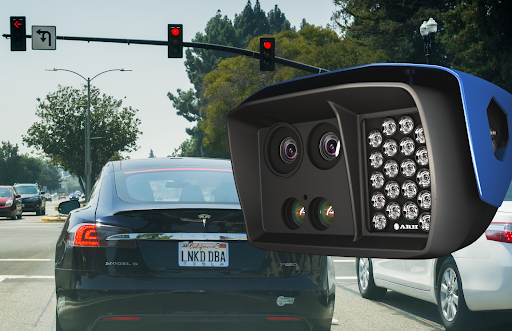Smooth-flowing traffic is (relatively) safe traffic, even at today's higher speeds. What usually sets the scene for an accident is a disruption in the smooth flow. When such an event occurs, it surprises drivers. Surprised drivers make sudden moves, and the pressure to act quickly often forces them to make the wrong move, worsening the disruption. That surprises other drivers, resulting in a chain reaction that's likely to cause an accident.
So what are the causes of these disruptions? It can be many things, but drivers going faster or slower than the general flow is a pretty common cause. And, undoubtedly, a driver going faster, especially if he's "lane-jumping" to keep moving more quickly than others in heavy traffic, is the more dangerous behavior. Therefore, the big question is how to prevent the disruptions caused by speeders?
This article considers the ways ALPR (automatic license plate recognition) technology can be applied to this problem. For instance, specific ALPR camera models are programmed to measure individual vehicles' speed. Some have this as their primary function; for others, it's an optional feature that the user is free to choose or omit from the camera's set-up.
The Importance of Speed Measurements and How Special Techniques Can Improve Results
We all know the drill: "experienced" speedsters learn the positions of fixed speed cameras so they can slow down before reaching them. A big smile to the camera, pretending to be an orderly citizen, then they floor it, resuming their reckless behavior once again. And since they live for speed(ing), they often travel far and wide, causing troubles virtually everywhere.
ALPR is the technology to help agencies thwart speedsters no matter where they are.
Measure Average Speed Over a Segment of Several Hundred Meters
To catch these drivers, law enforcers have to set up an average-speed-over-a-segment measurement device. Better yet if its location is changed frequently, using portable ALPR cameras. This guarantees that drivers get the message: speed cameras can be watching them anytime, anywhere.
Using ALPR cameras that can measure speed from far away adds another element to the effectiveness of this technique.
Adaptive Recognition's S1 portable speed and traffic enforcement camera with ALPR has the features to put all these speed measurement tricks into action. It can be quickly set up and can measure speed from as far away as 600 m, using its super-accurate laser "eye". An added bonus: It also catches red-light violators, stolen vehicles, and other trouble-makers.
Use Vehicle-Mounted Cameras
A mobile ALPR camera mounted on the rooftop of a police patrol car - or behind its windshield - can measure speeds when both the police vehicle and the detected car are in motion. Mobile cameras are a very effective tool for identifying hazardous driver behavior, including speeding, running red lights, etc. Adaptive Recognition's MicroCAM mobile ALPR camera also searches for stolen or otherwise wanted vehicles, as well.
Catch Repeat Violators Far From Their Home Area
Suppose a driver from Stuttgart, Germany, travels to Copenhagen, Denmark, and misbehaves there. How would the Danish police officer know if that driver is a one-time offender or it's their "regular" way of driving?
An international database, maintained with input from police agencies ALPR cameras everywhere through Adaptive Recognition's GDS (Globessey Data Server) "middleware", can ensure that drivers records travel with them. Agencies anywhere can have this information readily available. Simply put, frequent violators of the law cannot hide whether they cross the border or not.
We've described a few ways ALPR cameras contribute to traffic safety by discouraging speeders and other disruptors to smooth traffic flow.
To learn more about how ALPR technology supports safety in traffic and otherwise enhances life experiences, visit Adaptive Recognition's website, and contact their experts to discuss your traffic safety issues or vehicle ID needs.
See Now: OnePlus 6: How Different Will It Be From OnePlus 5?






















